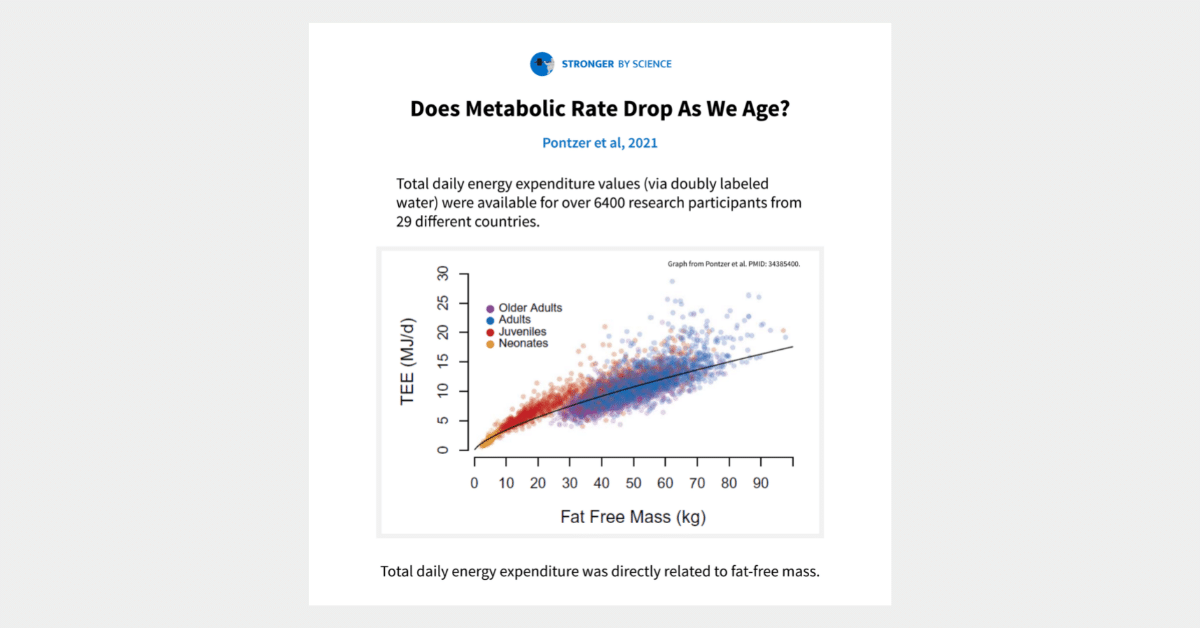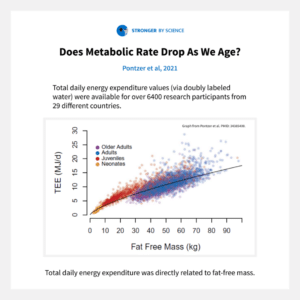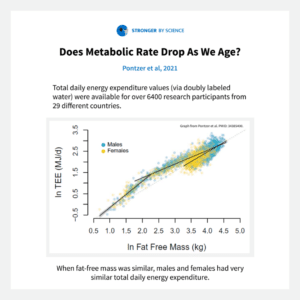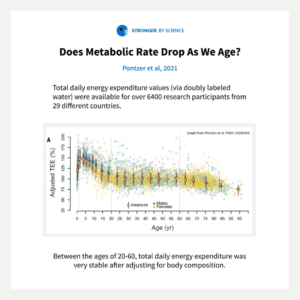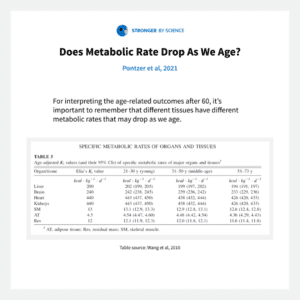A recent study by Pontzer et al (PMID: 34385400) presents total daily energy expenditure (TDEE) values from over 6400 research participants from 29 different countries. By using doubly labeled water and body composition data, the researchers were able to make a number of insightful observations.
The main observations were that:
- Males and females have similar energy expenditure when body composition is accounted for
- When accounting for body composition, energy expenditure remains pretty stable from the age of 20 to 60 – even during pregnancy!
- Beyond 60, fat-free mass and TDEE drop, but fat mass and %body-fat do not seem to increase
- Age-related drops in absolute energy expenditure may be related to loss of fat-free mass, lower activity level, and decline in organ-level metabolic rates
- Even when controlling for body composition, sex, and age, energy expenditure can vary considerably between individuals, and there’s no easy way to predict that variation for specific individuals
When scanning the data, a few pretty important practical applications jump out:
- If you have low fat-free mass and you wish to lose some fat mass, your calories might have to get pretty low
- For adults under 60, fat-free mass should be a major factor driving TDEE estimates, rather than sex or age
- As we age, we should prioritize training and nutrition strategies that help us keep our activity level high while building or maintaining fat-free mass
- Due to substantial variation between individuals, TDEE can be hard to reliably estimate when using generalized, population-level equations
That final point about variation between individuals is particularly important. Generic estimation equations can get most people pretty close to their estimated TDEE, but a more refined calculation process is required to get a more robust estimate. When building the MacroFactor diet app, we emphasized the use of TDEE estimation algorithms that rely on fat-free mass estimates in conjunction with tracking of daily nutrition intake and changes in total body energy stores to continuously update and refine your TDEE estimate and daily nutrition targets.

